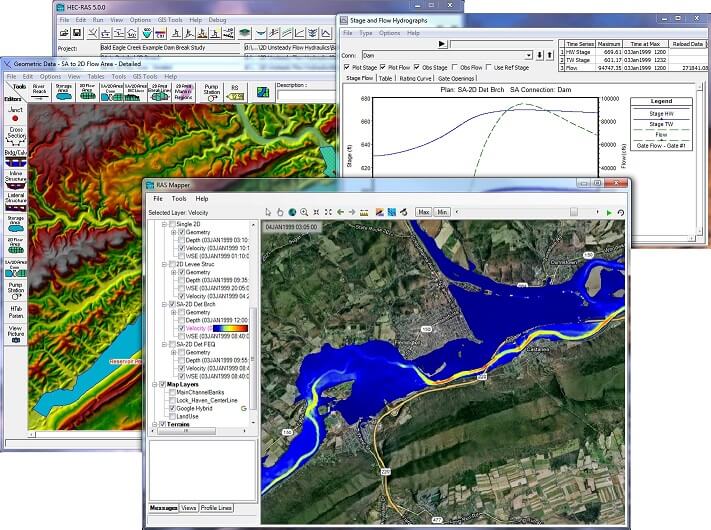

Select the Parameters | Loss | Change Method menu option. Alternatively, you can also enter the area by clicking on each subbasin element and entering the Area in its Component Editor. Enter the subbasin areas using the table below. Click the Parameters | Subbasin Area menu option (if you only see one subbasin, that means you had the element selected when opening the global editor). In the Watershed Explorer, highlight the Sterling Creek Watershed Basin Model. In the Change Method window, select None as the Method. Turn off baseflow by selecting Parameters | Baseflow | Change Method menu option. This ensures the following changes will be made to al subbasins in the basin model. 
Click on the Sterling Creek Watershed Basin Model in the Watershed Explorer.
Baseflow will not be accounted for in this example. In Area 1's Component Editor, navigate to the Downstream dropdown and select Reach-1. To connect elements, click on Area 1 in the Watershed Explorer. At this point, your basin model should have eight elements as shown below.Īt this point, the hydrologic elements in the basin model are not connected. Click the basin model map to add the junction. Select the Junction Creation Tool to add a junction element. Create one more reach, named Reach-2, for a total of two reaches. Click in the basin model map area and drag your mouse to your desired reach length. Select the Reach Creation Tool to create a reach element. You should have a total of five subbasin elements. Add four more subbasins to the basin model. Select Subbasin Creation Tool and click in the basin model map area (located within the Desktop) to add a subbasin element. 
Expand the folder and select the basin model you just created which allows you to create hydrologic elements.
You will see a Basin Models folder show up in the Watershed Explorer. In the Basin Model Manager window, click the New button and name the basin model Sterling Creek Watershed. Add a Basin Model to the project by clicking on the Components | Basin Model Manager menu option. Open HEC-HMS version 4.10 and create a new project by clicking on the File | New menu option. These names will be helpful when navigating through the HEC-HMS Graphical User Interface. The following image shows the program screen in HEC-HMS with pertinent component names. HEC-HMS has additional capabilities not highlighted in this workshop and includes automated GIS tools, tools for processing Atlas 14 precipitation-frequency grids, and a Frequency-Analysis simulation type which can be used to build a flow frequency curve. As show in this tutorial, current HEC-HMS capabilities are available and provide similar workflow and results to the WinTR-20 software. The information in this tutorial was originally developed for a WinTR-20 workshop example. Hec hms for mac software#
HEC-HMS is another hydrologic modeling software that contains many different hydrologic methods and techniques, including methods from the NRCS. The model can be used for event based flood modeling for water resource projects and uses hydrologic techniques developed by the Natural Resource Conservation Service (NRCS). The WinTR-20 software is a storm event (precipitation-runoff) model developed by the United States Department of Agriculture (USDA). The following example was created using HEC-HMS version 4.10.







 0 kommentar(er)
0 kommentar(er)
